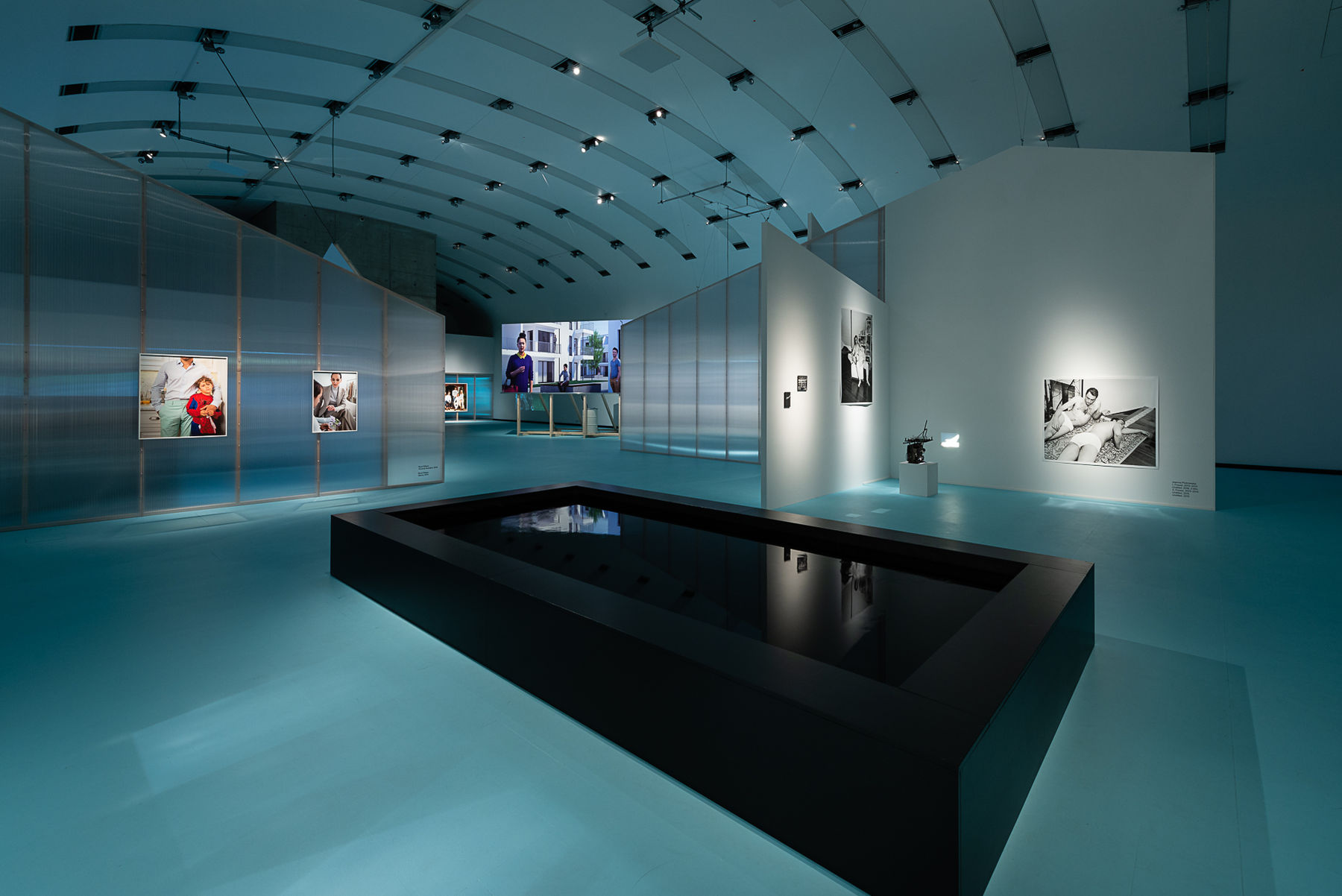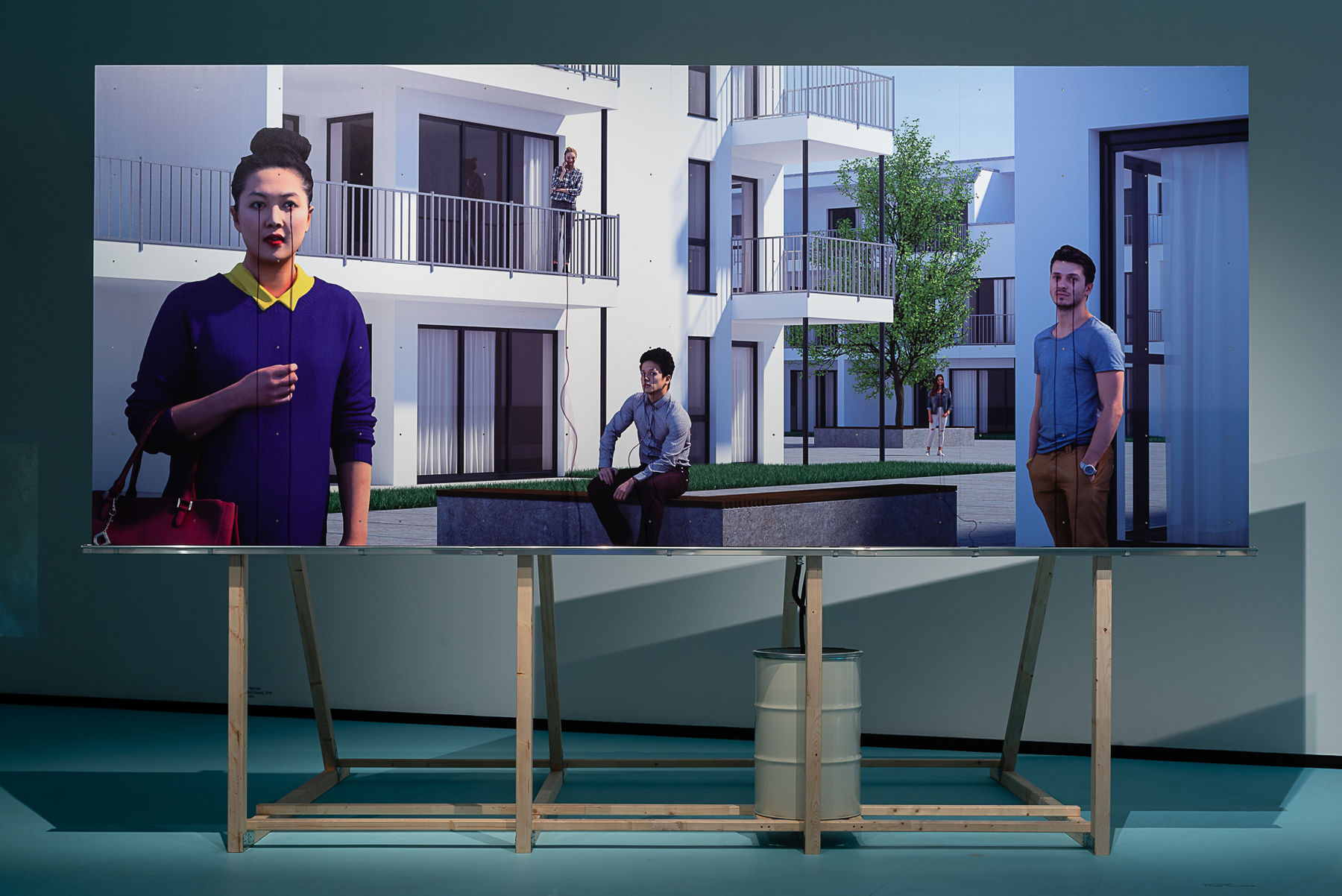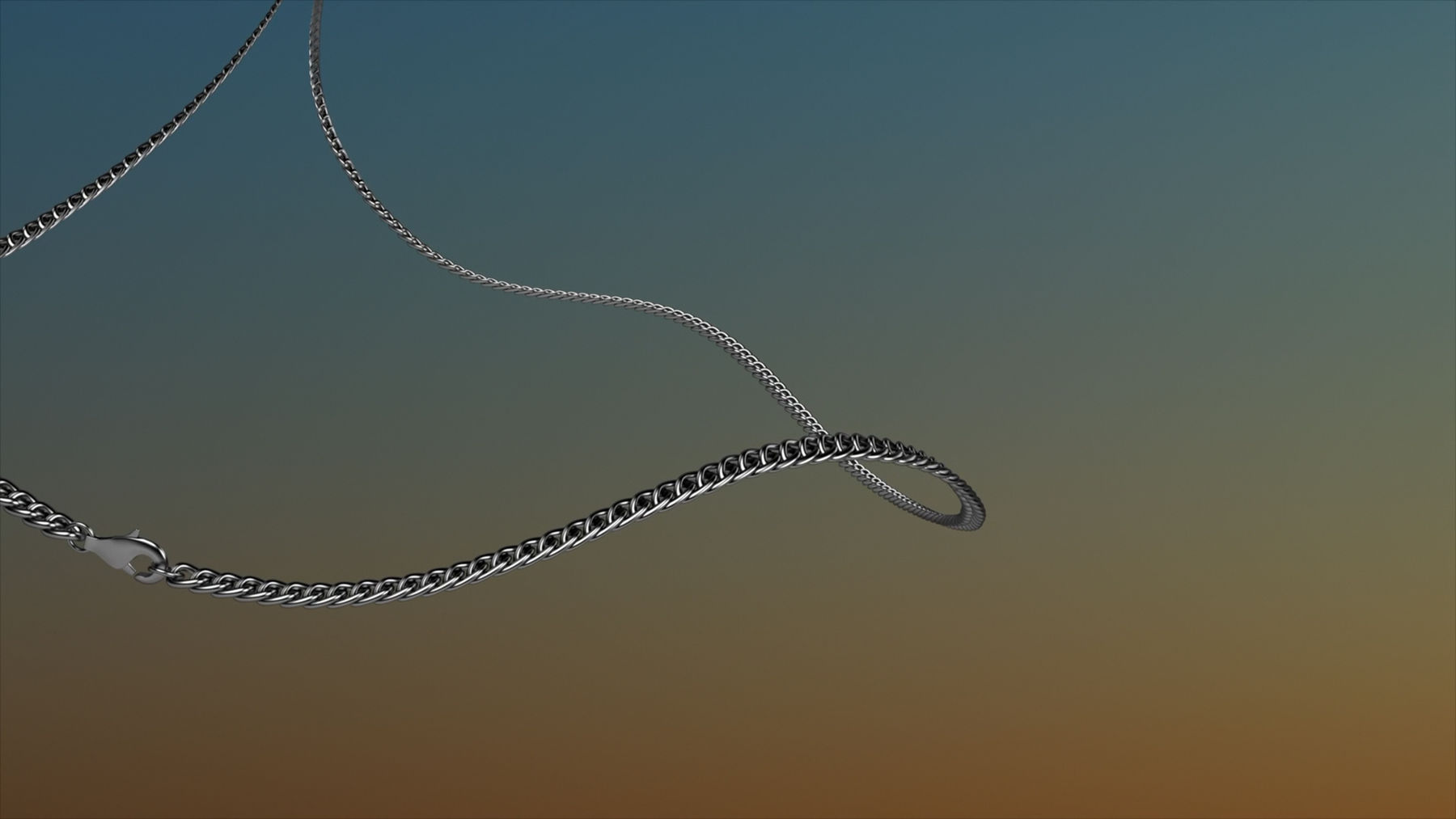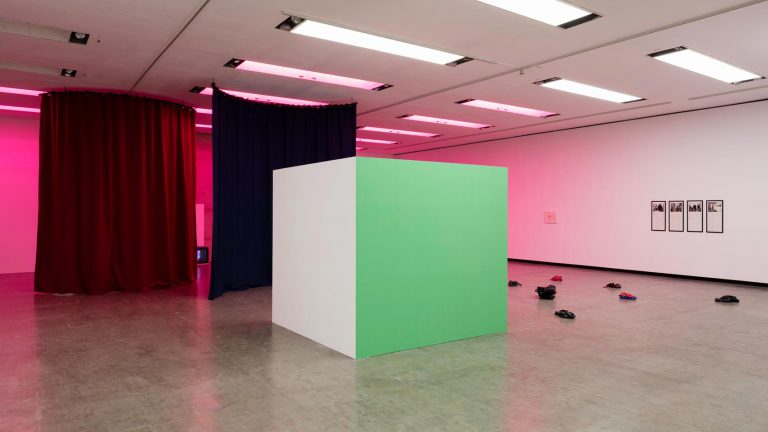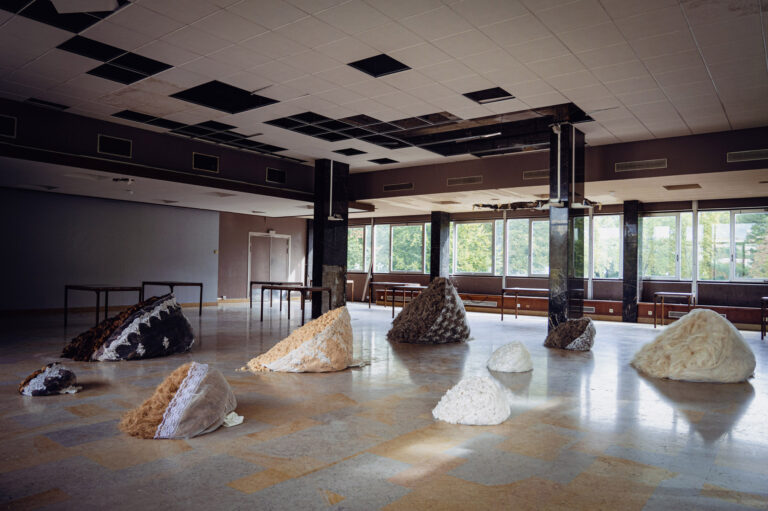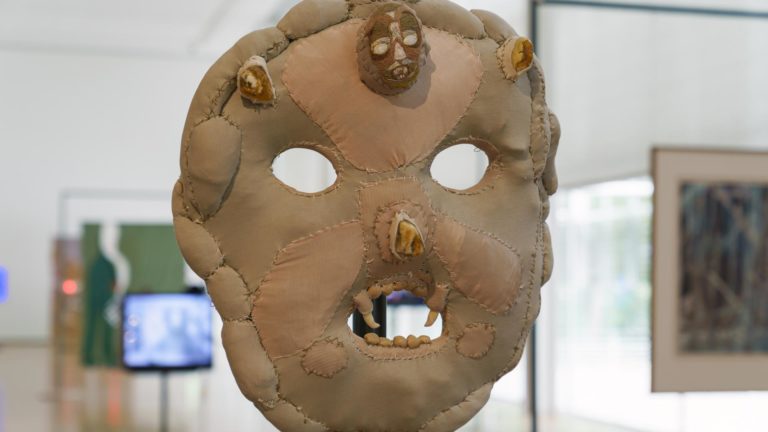Artists: Viltė Bražiūnaitė, Tomas Sinkevičius, Burak Delier, Buck Ellison, Isabella Fürnkäs, Eva Giolo, Thibaut Henz, Jan Hoeft, Hanne Lippard, Joanna Piotrowska, Jeroen de Rijke, Willem de Rooij, Jana Schulz, Andrzej Steinbach, Ingel Vaikla, Peter Wächtler, Ian Wallace, Tobias Zielony
Exhibition title: Antarctica. An Exhibition on Alienation
Curated by: Vanessa Joan Müller, Nicolaus Schafhausen
Venue: Kunsthalle Wien, Vienna, Austria
Date: October 25, 2018 – February 17, 2019
Photography: all images copyright and courtesy of the artists and Kunsthalle Wien
Note: Exhibition booklet can be found here
It all began with a brief sketch for a possible motion picture. “The glaciers of Antarctica are moving in our direction at a rate of three millimetres per year”, the director Michelangelo Antonioni noted in the 1960s. “Calculate when they’ll reach us. Anticipate, in a film, what will happen.” Antonioni’s Antarctica is a condensed image for a life in which genuine feelings are buried beneath a glacier of rigid convention, a vision of society that was dominant in post-war European film, and continues to inform the work of contemporary filmmakers. Ever sensitive to history’s shifting winds and changing social climates, visual art, too, is rife with haunting portraits of the cooling of affect in the age of consumerism.
The modern concept of alienation
Alienation is a term often employed to describe this phenomenon. Encapsulating a complex state of affairs in a single metaphor, it is nonetheless a paradoxical category. The experience of alienation reflects profound historical transformations – from secularisation, industrialisation, and the growing influence of technology to today’s radical individualisation. At the same time, it designates a fundamental “cooling” of the subject’s relationship with both her/his environment and her/his self. A salient characteristic of modernity, alienation describes a positively systemic disruption that distorts the relations humans have to the world around them, as well as to their own beliefs and aspirations.
A relation of unrelatedness
Summed up in a simple formula, alienation denotes a paradoxical state of simultaneous involvement and disinvolvement. The subject increasingly confronts relationships, institutions and work activities as alien entities in which she/he no longer recognizes herself/himself. That is to say – alienation is a peculiar kind of relation, not a non-relation, but “a relation of unrelatedness”, in the words of philosopher Rahel Jaeggi, a kind of separation in the mode of inseparability. Well over a century ago, the works of Édouard Manet, Charles Baudelaire’s “painter of modern life”, similarly sketched the singularisation of the individual in an ever more fragmented society. Compositionally united in a group, Manet’s figures often seem to find themselves suddenly alone, strangely disassociated from what would appear to be familiar settings. In high capitalism, the dominant economic system of Manet’s late nineteenth century, long-established relationships drifted apart without coming entirely undone. Akin to scenarios of wish fulfilment that remain forever elusive, they continue to haunt our world as the mainsprings of a restless quest for what was probably never real: an immediate union with our environment and ourselves.
Antarctica: An Exhibition on Alienation
Antarctica gathers art that probes the ramifications of this configuration of simultaneous involvement and disinvolvement, with an emphasis on more recent positions in contemporary art. The works examine the interplay between identity and disidentity, and the disunion of person and role prompted by the awareness of self-alienation in modernity, as well as the (ostensible) absence of alienation from today’s “new workplaces”. Studies of modes of behaviour adapted to the cold contrast with other works that speak to an intense, even overheated, self-absorption
– which ultimately marks merely another facet of the contemporary experience of alienation.
Society Starts at Three
The selection of works focuses on photography and film, media of representation that are said to be distinguished by a privileged relation to reality. As it turns out, contemporary portraiture tends to reveal not so much the sitters’ individuality as rather the interrelation between subject and role: the assimilation of prefabricated patterns as a blueprint for social coexistence. Andrzej Steinbach’s photographic series Society Starts at Three (2017), for example, shows three people in a room cycling through a supply of clothes and accessories. One of the models appears at the centre of each picture, whereas the others are cropped or entirely outside the frame. They trade positions, vary their gestures and bearing, leaving us to wonder which constellation reflects their actual relationship. Steinbach’s bold black-and-white aesthetic brings cutting-edge fashion campaigns to mind and suggests the way formerly subcultural codes are translated into mass-market lifestyle options. However, Society Starts at Three – the title is borrowed from an essay by the sociologist Ulrich Bröckling – also hints at a more optimistic reading: where the modern tendencies toward rationalisation (which effectively fuelled a general sense of alienation) were based on binary schemata. Today’s fluid and fast-paced social relations engender quite ambivalent “third” positions whose blurred or shifting stances may be capable of subverting the prevailing homogeneity.
Crisis and Control
Crisis and Control (2013), by contrast, brings the eroded boundary between labour and leisure into focus. Blending documentary filmmaking and performance art, Burak Delier’s video piece shows office workers and managers at an international corporation’s Istanbul branch performing yoga exercises while they narrate their personal work biographies. What would seem to be an absurd setup – the protagonists try to give accurate and detailed accounts of career options, and workplace challenges, while holding complicated poses – is almost tragically real: they are actual employees who hope that doing yoga will counterbalance the stress of their demanding jobs and the pursuit of efficient self-improvement.
Art as the hallmark of consumer culture
Other works in the exhibition illustrate the hallmark of contemporary consumer culture: a digitally perfected normalcy – elaborately staged and yet banal. Conspicuously, blemishes of any kind have been removed. Buck Ellison’s pictures are reminiscent of stock photography: readymade shots marketed by specialized agencies for use in advertising campaigns and as illustrations in printed matter or for websites. Perfectly composed images in saturated colours neatly fit into instantly recognizable categories: “lifestyle,” “community,” “success.” They are nondescript and virtually identical visual products in which the principle of optimisation is applied to all elements, though care is taken that the interventions enhancing reality are never too obvious. In Ellison’s work, everything looks genuine and posed at the same time, perfect in its aspiration to universal harmony among the characters, and yet the hedonism they flaunt only thinly veils a pervasive sense of sadness.
The affective regime of a capitalism remoulded by the rise of digital technology also comes into view in Viltė Bražiūnaitė and Tomas Sinkevičius’ video After Work (2016), which consists entirely of digitally generated imagery. Behind the sometimes almost painfully perfect surface of nature shots and repetitive work activities looms the spectral void that opens up when the visualisation and production of a world abandons all mimetic depiction in favour of mere resemblance to the real world.
The exhibition presents a focused selection of works that intuitively shed light on the complex dimensions of what the concept of alienation represents: a fundamental condition of contemporaneity that shapes all aspects of our lives.
Installation view: Antarctica. An Exhibition on Alienation, Kunsthalle Wien 2018, Photo: Jorit Aust
Installation view: Antarctica. An Exhibition on Alienation, Kunsthalle Wien 2018, Photo: Jorit Aust
Installation view: Antarctica. An Exhibition on Alienation, Kunsthalle Wien 2018, Photo: Jorit Aust
Installation view: Antarctica. An Exhibition on Alienation, Kunsthalle Wien 2018, Photo: Jorit Aust: Isabella Fürnkäs. In Ekklesia, 2015, Courtesy the artist
Installation view: Antarctica. An Exhibition on Alienation, Kunsthalle Wien 2018, Photo: Jorit Aust: Ian Wallace, At the Crosswalk VI, 2008, Courtesy Hauser & Wirth, Zurich
Installation view: Antarctica. An Exhibition on Alienation, Kunsthalle Wien 2018, Photo: Jorit Aust: Jan Hoeft, I Feel You, 2018, Courtesy the artist
Installation view: Antarctica. An Exhibition on Alienation, Kunsthalle Wien 2018, Poto: Jorit Aust: Isabella Fürnkäs. Blind Land, 2018, Courtesy the artist; Andrzej Steinbach. Untitled (Sequenz #1 & #4) from the series: Gesellschaft beginnt mit drei, 2017 Courtesy private collection, Hamburg, the artist & Galerie Conradi, Hamburg/Brussels
Installation view: Antarctica. An Exhibition on Alienation, Kunsthalle Wien 2018, Photo: Jorit Aust: Joanna Piotrowska. I, Frowst, 2013–2014; V, Frowst, 2013–2014; Untitled, 2015; Untitled, 2016, Courtesy Southard Reid, London & Dawid Radziszewski Gallery, Warsaw
Installation view: Antarctica. An Exhibition on Alienation, Kunsthalle Wien 2018, Foto: Jorit Aust: Burak Delier Crisis & Control, 2013, Courtesy the artist
Installation view: Antarctica. An Exhibition on Alienation, Kunsthalle Wien 2018, Photo: Jorit Aust: Viltė Bražiūnaitė / Tomas Sinkevičius, Afterwork, 2016, Courtesy the artists
Installation view: Antarctica. An Exhibition on Alienation, Kunsthalle Wien 2018, Photo: Jorit Aust: Jeroen de Rijke & Willem de Rooij. I’m Coming Home in Forty Days, 1997, Courtesy Willem de Rooij & Galerie Buchholz, Berlin/Cologe/New York; Jana Schulz. Golden Boys. Iğdır. Maravilla. Monterey Park, 2018 Courtesy the artist
Viltė Bražiūnaitė / Tomas Sinkevičius, Afterwork (Video Still), 2017, Courtesy the artists
Jana Schulz, GOLDEN BOYS Igdir (Video Still), 2018, © the artist
Ingel Vaikla, Roosenberg (Video Still), 2017, Courtesy the artist
Buck Ellison, Untitled (Christmas Card #6), 2018, Private collection, Courtesy the artist
Joanna Piotrowska,V, Frowst, 2013 – 2014, Courtesy Southard Reid, London
Andrzej Steinbach, Untitled (from the series Gesellschaft beginnt mit drei), 2017, Courtesy the artist & Galerie Conradi Hamburg, Brussels


